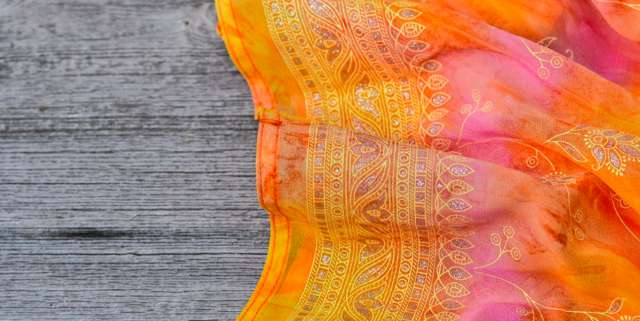
The colorfastness of silk tends to be lower than that of other dyed textiles, which is a challenge for silk manufacturers. Image Source: PxHere user Monika Stawowy
Silk is one of the most sought-after textiles in the world. Its beauty and plush texture makes it ideal for creating luxurious evening gowns, soft sheets, and chic scarves. However, silk is also one of the most difficult textiles to work with; not only is it expensive to produce in large quantities, it’s also prone to color fading and has notoriously low colorfastness.
This is why silk textile manufacturers must test their silk products for color consistency and fastness throughout the manufacturing process. Using spectrophotometry, you can ensure that your dyes saturate the silk completely and that the silk retains its color even after prolonged washing and sun exposure. When you use an advanced spectrophotometer that is designed to meet the specific needs of the textile industry, you’ll ensure that your silk products won’t fade after just a few washes.
Why Silk Textiles Are Prone to Color Fading
The greatest challenge silk manufacturers face is that silk does not hold dye as well as some other textiles. In contrast to materials like cotton yarn, silk tends to fade more quickly when exposed to the sun or prolonged washing. If a silk textile’s colorfastness is low, then that could result in poor color saturation, color inconsistencies in the final product (like a fabric that appears mottled), and bleeding.1
But why is silk so difficult to dye properly? Researchers studying the properties of silk suspect that it is due to the stripping of the material’s natural protective layers during manufacturing. A study conducted by the National Institute of Sericultural and Entomological Science found that a sticky protein called sericin plays an important role in raw silk.2 Sericin protects raw silk from sun damage and color fading. However, if manufacturers degum their fabrics to remove stickiness and improve texture, then this protective layer is also removed, resulting in a textile that’s prone to color loss.
Even when manufacturers choose not to degum their silk, color fading can still occur depending on the type of mordant used. For example, silks that are mordanted with iron oxide show only slight color fading, whereas those mordanted with aluminum tend to fade significantly. This is why many manufacturers take preventative measures throughout the manufacturing process to prevent color loss and improve the colorfastness in their products. 3 You can improve colorfastness in your silk products by using an iron oxide mordant, coating your product in a thin layer of protective polymer film and by testing your silk products for colorfastness and consistency using a spectrophotometer.

When you coat your silk textiles in a thin polymer film, you can improve colorfastness. Image Source: Pixabay user Wokandapix



